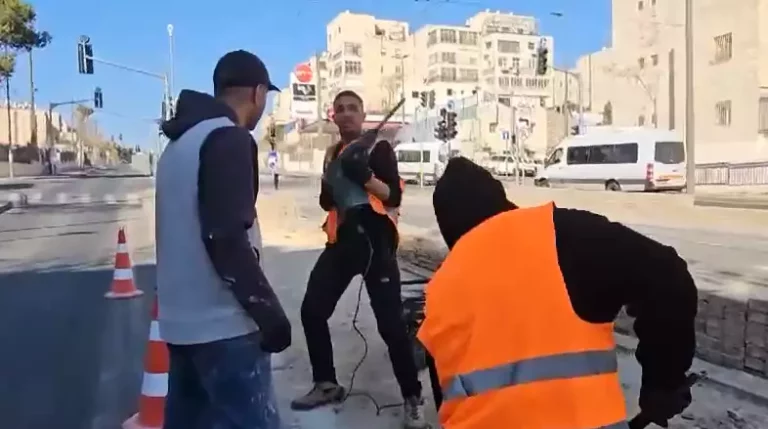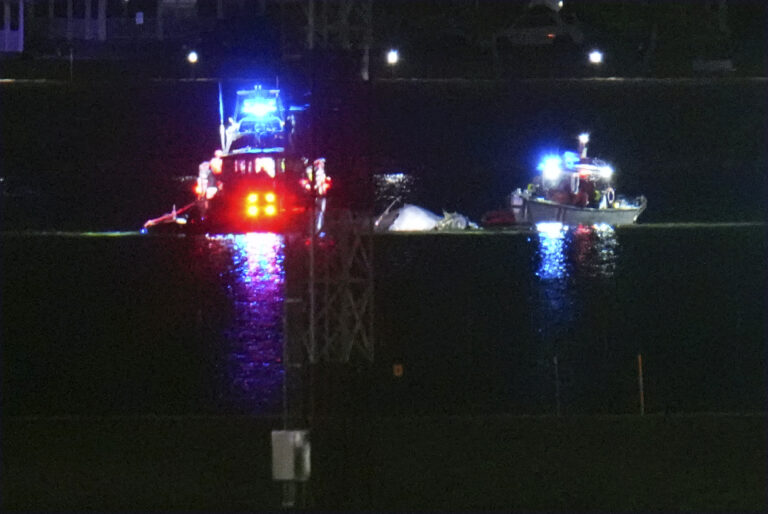Russian authorities are building defensive positions in occupied areas of Ukraine and border regions of Russia, reflecting fears that Ukrainian forces may attack along new sections of the 1,000-kilometer (620-mile) front line of a war nearing its ninth month.
In recent weeks, Ukraine has focused its counteroffensive mostly on the Kherson region. Their relentless artillery strikes cut the main crossings across the Dnieper River, which bisects the southern region, leaving Russian troops on the west bank short of supplies and vulnerable to encirclement.
Kirill Stremousov, the deputy head of the Russian-installed regional administration in Kherson, said Sunday in a radio interview that Russian defensive lines “have been reinforced and the situation has remained stable” since local officials strongly encouraged all residents of the region’s capital and nearby areas Saturday to evacuate by ferry to the river’s east bank.
The region is one of four that Russian President Vladimir Putin illegally annexed last month and put under Russian martial law on Thursday. Kherson city has been in Russian hands since the early days of the war, but Ukraine’s forces have made advances toward reclaiming it.
About 20,000 Kherson residents have moved to places on the east bank of the Dnieper River, the Kremlin-backed regional administration reported. The Ukrainian military said Sunday that Russia’s military also withdrew its officers from areas on the west bank, leaving newly mobilized, inexperienced forces.
The Ukrainian claim could not be independently verified.
As Ukraine presses south after liberating the Kharkiv region in the north last month, authorities in the western Russian provinces bordering northeastern Ukraine appeared jittery.
The governor of Russia’s Kursk region, Roman Starovoit, said Sunday that two defensive lines have been built and a third one would be finished by Nov. 5.
Defensive lines were also established in the Belgorod region, Gov. Vyacheslav Gladkov said. He posted pictures Saturday of lines of pyramid-shaped concrete blocks to block the movement of armored vehicles.
More defensive positions are being built in the Luhansk region of eastern Ukraine, according to an announcement by Yevgeny Prigozhin, a millionaire Russian businessman dubbed “Putin’s chef.” Prigozhin owns the Wagner Group, a mercenary military company that has played a prominent role in the war.
He said his company was constructing a “Wagner line” in the Luhansk region, another of the Ukrainian provinces Putin illegally annexed last month. Prigozhin posted images Wednesday showing a section of newly built defenses and trench systems southeast of the town of Kreminna.
The British Defense Ministry said Sunday that “the project suggests Russia is making a significant effort to prepare defenses in depth behind the current front line, likely to deter any rapid Ukrainian counteroffensives.”
Russia’s forces captured Luhansk several months ago. Pro-Moscow separatists declared independent republics in the region and neighboring Donetsk eight years ago, and Putin made controlling all of both provinces a goal at the war’s outset.
The Institute for the Study of War, a think tank in Washington, said Sunday that Russia’s latest strategy of targeting power plants appeared aimed at diminishing Ukrainians’ will to fight and forcing the government in Kyiv to devote more resources to protecting civilians and energy infrastructure.
It said the effort was unlikely to damage Ukrainian morale but would have significant economic impacts.
Nine regions across Ukraine, from Odesa in the southwest to Kharkiv in the northeast, saw more attacks targeting energy and other critical infrastructure over the past day, the Ukrainian army’s general staff said. It reported a total of 25 Russian air strikes and more than 100 missile and artillery strikes around Ukraine.
The Russian attacks forced the emergency suspension of fertilizer production at a major chemical plant in northwestern Ukraine. The company that operates the plant, Rivneazot, said Sunday the suspension did not pose an environmental risk.
Russian S-300 missile strikes overnight hit a residential neighborhood in the city of Mykolaiv, injuring three people, according to the Ukrainian military’s southern command. Two apartment buildings, a playground and a warehouse were damaged or destroyed, it said in a Facebook post.
Images posted on Telegram by local media and officials showed an apartment building with one side sheared off, and piles of rubble amid puddles on the adjacent ground.
Ukrainian counteroffensive forces in the Kherson and Zaporizhzhia regions, meanwhile, targeted Russian-held facilities, notably in the town of Nova Kakhovka, and carried out 17 air strikes in the overall campaign, according to the Ukrainian army’s general staff.
In a Telegram post Sunday, the Ukrainian military claimed to have destroyed 14 Iranian-made Russian drones over the past day.
The mayor of Enerhodar, home to the Zaporizhzhia Nuclear Power Plant, reported an attack on a hotel used by Russian occupying forces and people who collaborate with them. It was unclear if anyone was hurt.
Elsewhere, Ukraine’s security service said Sunday it had detained the longtime chief of a major aircraft engine factory, accusing him of collaborating with Russia by supplying military equipment for Russian attack aircraft.
Viacheslav Bohuslaiev, president of the Motor Sich plant in Zaporizhzhia, and another top factory official were charged with collaboration and “assisting the aggressor state.”
Ukrainian security service SBU said in a statement that the two were accused of colluding with a Russian arms maker close to the Kremlin to supply Ukrainian-made engines and spare parts to Russian forces. The SBU described a complex scheme using intermediaries in three countries to evade sanctions against Russia.
Motor Sich is one of Ukraine’s leading manufacturers and has been a key maker of aircraft engines since Soviet times. Its facilities have been repeatedly targeted by Russian strikes during the war.
(AP)











